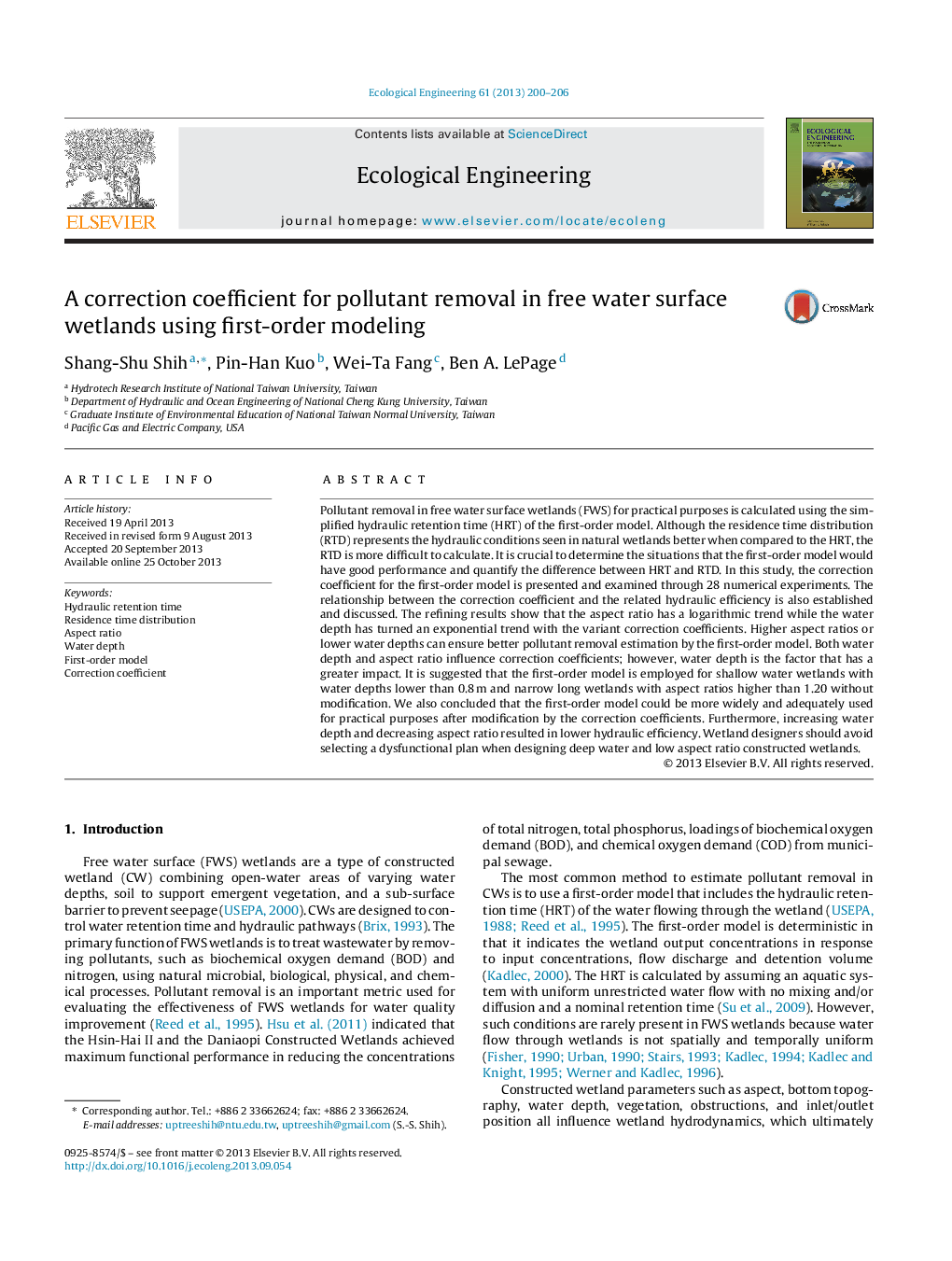| Article ID | Journal | Published Year | Pages | File Type |
|---|---|---|---|---|
| 4389480 | Ecological Engineering | 2013 | 7 Pages |
Abstract
Pollutant removal in free water surface wetlands (FWS) for practical purposes is calculated using the simplified hydraulic retention time (HRT) of the first-order model. Although the residence time distribution (RTD) represents the hydraulic conditions seen in natural wetlands better when compared to the HRT, the RTD is more difficult to calculate. It is crucial to determine the situations that the first-order model would have good performance and quantify the difference between HRT and RTD. In this study, the correction coefficient for the first-order model is presented and examined through 28 numerical experiments. The relationship between the correction coefficient and the related hydraulic efficiency is also established and discussed. The refining results show that the aspect ratio has a logarithmic trend while the water depth has turned an exponential trend with the variant correction coefficients. Higher aspect ratios or lower water depths can ensure better pollutant removal estimation by the first-order model. Both water depth and aspect ratio influence correction coefficients; however, water depth is the factor that has a greater impact. It is suggested that the first-order model is employed for shallow water wetlands with water depths lower than 0.8Â m and narrow long wetlands with aspect ratios higher than 1.20 without modification. We also concluded that the first-order model could be more widely and adequately used for practical purposes after modification by the correction coefficients. Furthermore, increasing water depth and decreasing aspect ratio resulted in lower hydraulic efficiency. Wetland designers should avoid selecting a dysfunctional plan when designing deep water and low aspect ratio constructed wetlands.
Keywords
Related Topics
Life Sciences
Agricultural and Biological Sciences
Ecology, Evolution, Behavior and Systematics
Authors
Shang-Shu Shih, Pin-Han Kuo, Wei-Ta Fang, Ben A. LePage,
